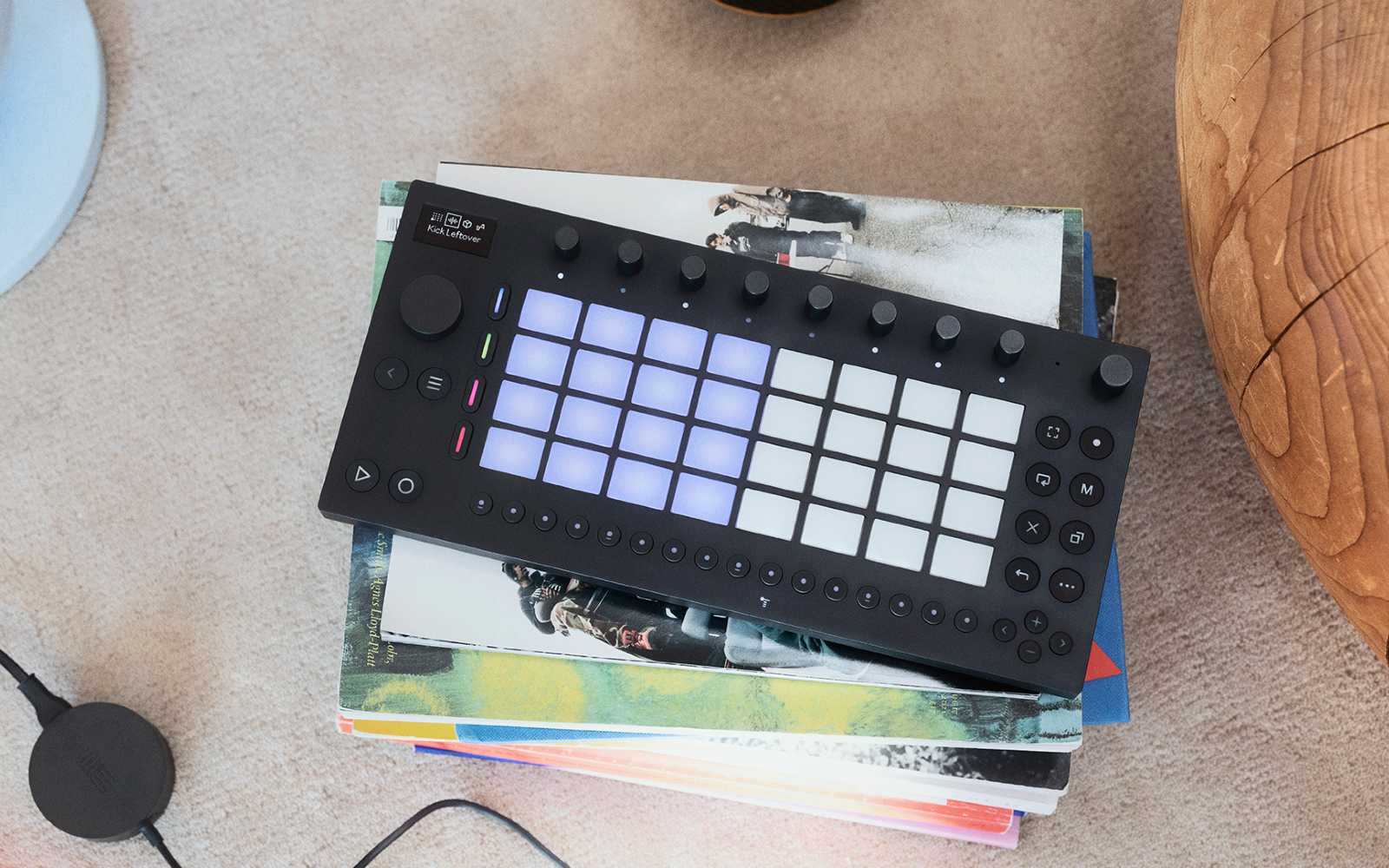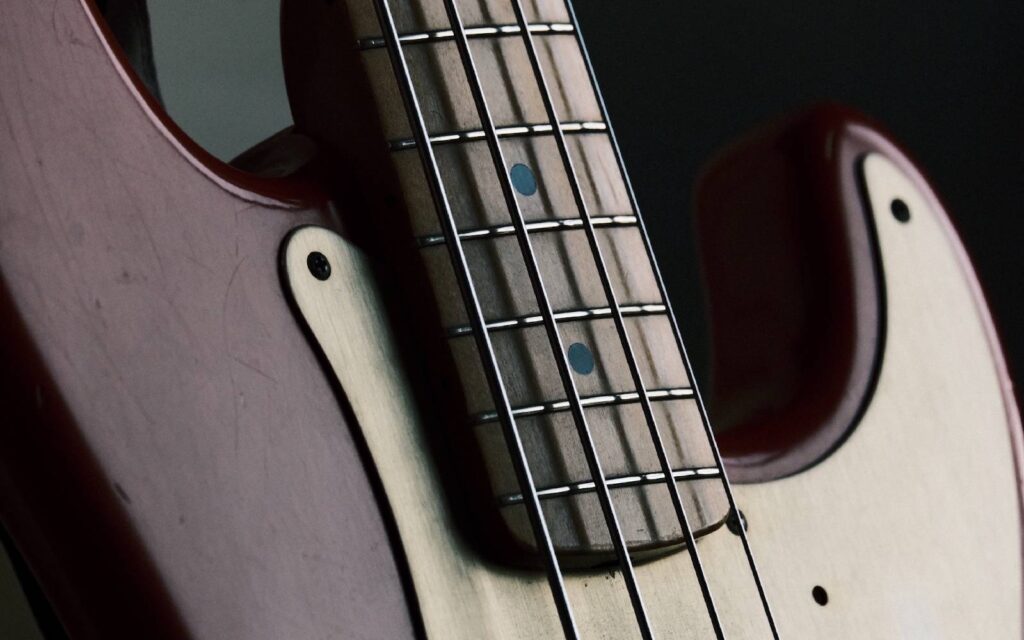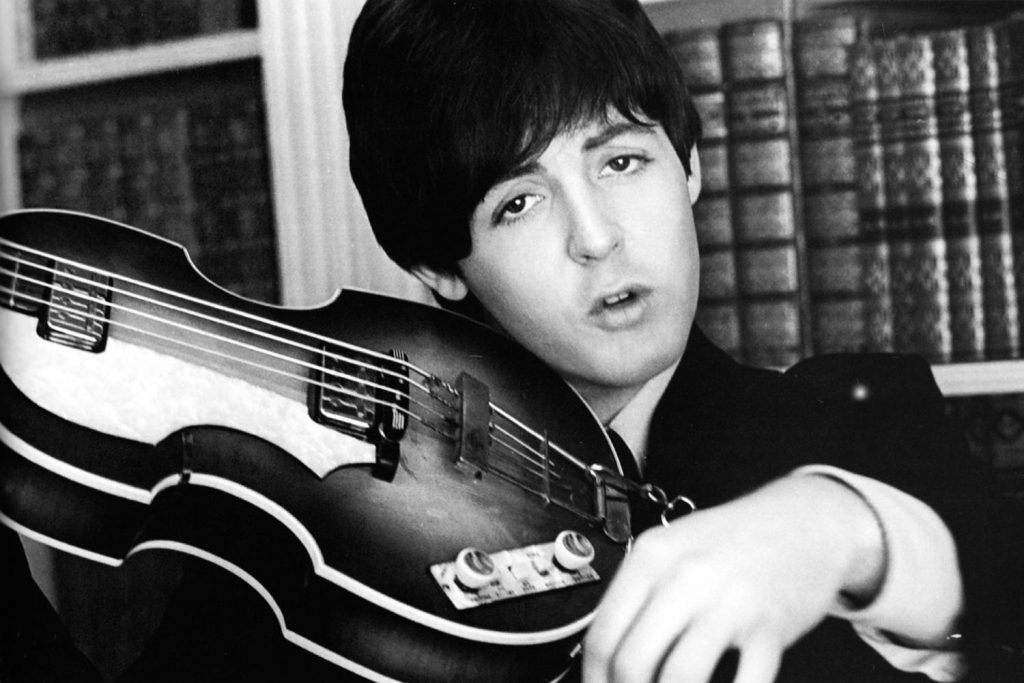I’m tired of looking at screens. Really tired. Music creation, screen. News reading, screen. Movie watching, screen.
From discussions with friends, it’s a shared sentiment If music making isn’t your day gig, or even if it is, the last thing you feel like doing after work is starting up a computer to work on a track and… stare at a screen. So, we see the rise of the DAW-less jammer! YouTube is now flooded with “gearfluencers” extolling the virtues of DAW-less setups, and there’s no shortage of manufacturers with impressive hardware offerings. Enter, Ableton Move. Standalone groove box, portable synth, sequencer, DAW-less jammer and Live Controller, Move will be a cat among the pigeons. Boasting an impressive feature set and super-tight workflow, will this little black box of flashing lights prove to be just what the doctor ordered, or a jack-of-all-trades, master of none? Let’s dig deeper and find out.
Read more features, columns and interviews here.
First Impressions
Very much informed by Ableton’s minimalist design aesthetic, Push users will find the sleek, matte-black device immediately familiar. Neither word, nor instructive graphics are printed on the sturdy black plastic chassis, which is less than half the size, and considerably lighter, than Push. Move fits nicely into a small bag and the rechargeable battery enables you to create in a park, in bed using the integrated speakers or at 30,000 feet. Once you’re ready, upload the Set to Ableton Cloud via Wi-Fi and finish it off in Live or the iOS app, Note.
At its heart, Move is a portable four track instrument and sequencer featuring two audio effects per track. One of the four tracks can be routed to sequence external synths, via USB MIDI, and Move also operates as a dedicated controller for Live. The integrated speakers make it a true standalone instrument, but headphones or external speakers bring out its best. There are 8 x 4 velocity sensitive pads which feel great under the fingers, if perhaps a little firm. Polyphonic aftertouch enabled, the pads bring expressive control to the onboard synths. Aftertouch is “baked” into the Track Presets and offers practical, tactile parameter modulation that can be recorded as automation. However, further editing of modulation sources and destinations is not possible, and there is no MPE support. Overall, the pads are more than serviceable for playing beats, melodies and chords with aftertouch.
Above the pads sit eight multifunction encoders, and beneath, 16 small, backlit buttons for step sequencing. The encoders feel great and offer enough resistance to prevent accidental tweaks. Tapping the encoders reveals the corresponding control parameter on the small, but legible, screen. Some will want a bigger screen, but I’ve made my case. The geometry of the layout is pleasing in both form and function. Each encoder sits centred above a column of pads. Underneath each column lie two step sequencer buttons, in a nice eighth note pairing. A small line under the first, and every fourth sequence button, cleanly indicates beats and sub-beat groupings. Pressing the shift button invokes further functions for 12 of the 16 sequencer buttons, indicated by a row of illuminated icons. A press to select Navigation Wheel and a Volume Encoder are present alongside various transport and modifier buttons, each identified by a backlit icon. Immediately to the left of the pads, four coloured Track buttons are used to select, mute and control the volume of Move’s four tracks.
Four physical connection ports are available on the rear panel: USB-C for power, data transfer and Live Control; USB-A to sequence and control external USB MIDI devices; and 3.5mm stereo audio input/output. Strong opinions will be expressed online about these choices, no doubt. That said, the USB-A connector provides up to 500mA of power for external devices, so, should Ableton have opted for a five pin DIN, or, 3.5mm MIDI connector, this would not have been possible. Wi-Fi is present and can be used for software updates, upload Sets to Ableton Cloud and when Link is enabled, allows Move to sync clocks with compatible third party iOS apps, Note and Live. Move is compatible with Live 12.1 including Intro, Standard and Suite. Some functionality varies across these, so refer to Ableton’s website for exact specs.
In Deep
At first, I found Move a little daunting to decode but after an hour or so with the manual, it all came together. Several views are available: Set Overview; Session Mode and Note View. Session Mode is for clip launching, Note Mode, for sequencing and recording, and Set Overview provides access to different Sets and new Set Creation. Surprisingly, it is possible to switch between Sets seamlessly, in Set Overview, whilst playing back audio. This allows Sets to be used for sections of songs, or as separate songs. Very cool.
When working in Note View, beats, melodies and chords can be recorded in real-time or entered via the step sequencer. Once captured, individual note length, velocity and timing can be edited. Note probability and ratchets aren’t present but note repeat for live performance and recording is included. Track volumes can be adjusted by holding the Track Selector button and rotating the Volume Encoder. The Track Selector button glows brighter as audio peaks increase and turns white when the maximum is reached. Be warned, drive Move too hard, and an output limiter kicks in, protecting Move from digital clipping. Understandably, the limiter cannot be bypassed.
Two of Live’s flagship synths, Drift and Wavetable, are featured alongside Drum Racks, with the new Drum Sampler, as well as a reduced version of Simpler, called Melodic Sampler. The synths are macro-style implementations with only eight controls available. Still, the presets and templates available are beautifully curated and sound fantastic. The macro controls enable tweakers to create something unique from presets or the available templates. These cover a cross section of synthesis techniques, including virtual analog, dual oscillator FM and wavetable. Drum Racks can contain 16 samples, one per pad, and each pad/sample has its own sequencer lane. The built in mic can record a mono sample into either an individual drum pad, using the Drum Sampler device, or the Melodic Sampler. Doing so requires only two button presses. Start point and volume envelope parameters make it easy to set up start points and basic envelope contours. When working with Drum Racks, a press of both Shift and the eighth step sequencer reveals an alternate note layout. This layout will be familiar to Push users and allows samples to be played melodically according to the selected Scale Mode. Sample manipulation, using the various playback modes in Drum Sampler, is also possible. A quasi-granular sampler is achievable using the Stretch algorithm. Bitcrush, FM and Noise oscillators are also on offer. The Drum Pad/Sampler is monophonic, so this workflow would work best with one-shots, drones or atmospheres, and as each pad can be sequenced independently, you can hack your way to 64 tracks!
The Melodic Sampler is a stripped back version of Live’s Simpler, and offers basic editing and one of the following filter modes: LFP, HPF and BPF, modulated by a LFO. Looping with crossfades would be a welcome future addition. Two pad modes are available for playing chords and melodies in real-time: In-key or chromatic. Sampling (and resampling as an audio source) is possible using the mic or 3.5mm stereo audio input, which can also be used as a high-quality audio interface when connected to a computer with USB-C.
A selection of Live’s native audio devices are on offer: Channel EQ, Chorus, Delay, Dynamics, Phaser-Flanger, Redux, Reverb and Saturator. Although the devices are sonically identical to those found in Live, a reduced parameter set keeps the Move implementations serviceable, without relying on menu dives and hidden functions. The effects remain perfectly serviceable, and the sound at once familiar to Live veterans. Will more be available in the future?
Managing Move
To manage content on Move, Ableton has provided a web based app, accessible via any browser, at the address “move.local”. The app, titled Move Manager, allows recorded samples, imported samples and any saved presets to be backed up and organised. As mentioned above, Wi-Fi transfer of Sets for editing in Ableton Live and iOS Note is also available. The process is incredibly well implemented and easy to understand. Kudos to Ableton!

Move Manager provides a simple but powerful environment for managing content, on Move.
Live Control
If all of this wasn’t enough, Move can be configured via the settings menu, to function as a controller for Ableton Live. Session and Note Views allow clip and scene launching, as well as recording, step sequencing and editing of notes, velocities and lengths. The step sequencer works well in Drum Mode, and real-time recording of beats and melodies using the pads is great. Tracks can be record enabled, muted, clips deleted and duplicated. Scale Modes can be selected in Note Mode and Move’s extended functions, available using the Shift button, quantize, adjust tempo, note repeat, grid spacing, adjust metronome toggle etc. are also accounted for. The eight encoders control a single page of parameters on Live Devices and VST plugins, so careful creation of Macro Racks is prudent. Live Control, with Move, is far from an afterthought, and the features listed here are only the beginning.
It’s hard to deny we are in a golden age of music making tech. Ableton has a modest number of product offerings: Live, Note, Push and now Move. The scope of features and ease of interoperability between them all is a stunning technical achievement. The ability to design drum kits and sounds in Live, for later import, is fantastic and exploits Live’s extensive sound design features, removing the need for a dedicated editor. Using Move as a controller for Live immediately feels familiar and provides a comprehensive level of control. More effects would be welcome, and while the Melodic Sampler is useful, it leaves you wanting more.
Admittedly, there’s no shortage of small factor beat boxes on the market, and they all provide attractive features and sonics. Where Move stands apart, is the ability to start DAW-less, then shift to Ableton Live to finish tracks, and there’s also the controller mode! Ableton has really created something special with Move. An incredible amount of functionality has been packed into the small enclosure, but the masterstroke is the ease of use and how it integrates into the “Ableton Ecosystem”. The reduced editability of the onboards synths can be a little frustrating at times, but it does force you to get back making music. Move represents great value but is a reasonable investment for someone looking to elevate their music making, all the same. In the end, the choice is yours but right now, I’m off to the park, on the move, to make music.
The Ableton Move is available now. Keep reading, and for info on owning it yourself, visit Ableton.







